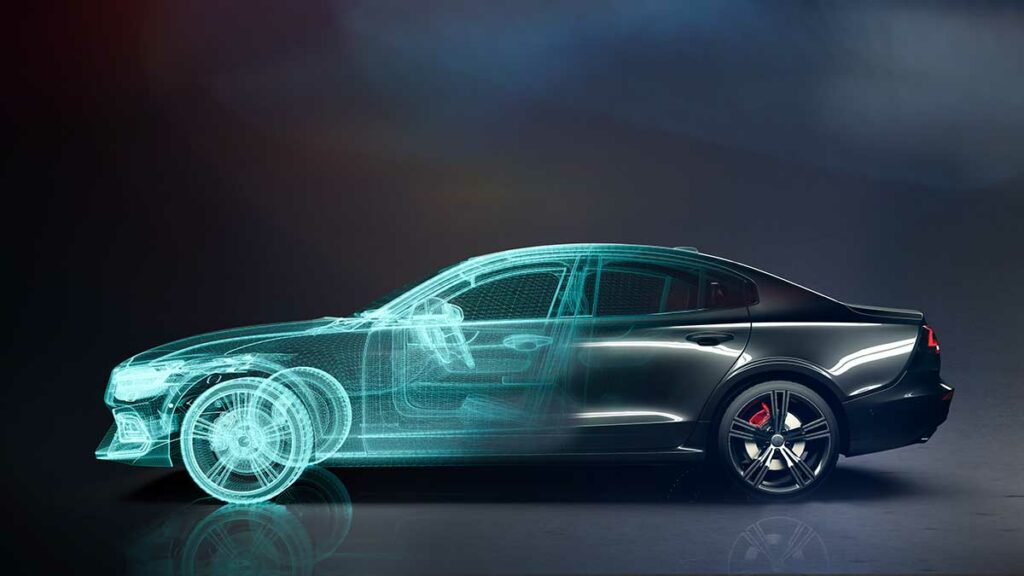Cutting-edge design requires vision and the ability to adapt to change. What does this mean for 3D design and modeling? In this blog post, we offer a fresh perspective into the processes and tools that can yield optimal design results.

©Open Studio / stock.adobe.com
Where Are We Today?
In corporate settings, design is often a fragmented process that involves a large number of specialists: designers, data scan technicians, CAD 3D modelers, clay modelers, Class A resurfacing CAD specialists, design managers, and 3D visualization experts, to mention just a few.
The complexity of 3D design as a process varies depending on industry sector and organizational structure, but more often than not, this task is long-winded, and unnecessarily so. Let’s examine why.
First of all, the design process itself rarely starts with 3D techniques. A typical design workflow usually looks like this:
2D sketching (pen and paper) > 2D rendering (using Photoshop) > Transfer to CAD 3D (using Alias or similar) > clay modeling > 3D data scanning > Reverse engineering in Alias > Transfer to 3D rendering software (Keyshot or Vred) > Class A Resurfacing (using Alias or Catia) > Approval request in Vred or similar.
It’s impossible not to notice the number of media transfers and software tools used. And although the workflow described above looks sequential, there are countless loops of review and iteration involved in each of the stages. In other words, the standard design workflow rarely flows sequentially, which translates into massive efficiency losses. Clearly, design professionals face an important challenge: how to bring new perspectives into 3D design and modeling. This is precisely what this guide aims to provide.
New Perspectives In 3D Design And Modeling
The main focus of this guide is approaching 3D design and modeling with efficiency and creative freedom in mind. Irrespective of their sector, design companies need a single tool that unifies the stages of 3D design and modeling and fully supports the product creation process from concept design, through form-finding, and to feasibility assessment.
For the purposes of this guide, we have redefined the 3D design process so it consists of just two workflows: creation and curation.
A Guide To Creation In 3D Design And Modeling
The creation stage is where designers materialize their original concept into a visual rendering. The steps are as follows:
1- Sketching
This involves drawing the basic shape of a product with most attention put into the concept’s most distinguishing or characteristic lines.
2- Wireframing
Wire frames add higher definition to a concept’s distinguishing lines, and bring parts into a well-defined whole. Here, most attention is directed to overall proportions and coherence in design.
3- Surfacing
Using the wire frame as a foundation, designers add surfaces and polish the details. The aim is to create a realistic depiction of the final product, replicating materials, color, shades, reflections, and other important elements of design.
4- 3D visualization
Objects don’t exist in a vacuum. Because they’re meant to solve real-life problems, it’s essential to visualize how the object will look in its intended environment. Here, designers play with different scenarios and lighting conditions to simulate and evaluate the user’s final experience.
A Guide To Curation
Project and design managers are an integral part of the 3D design and modeling process by:
- Providing one-on-one and group reviews. In virtual design studios, managers can offer ad lib feedback to one or many designers.
- Using a variety of tools to communicate with the team. For example, flyingshapes virtual reality design software features a virtual tape tool, annotations, and voice memo functions, which are useful to communicate change requests and feedback remotely.
- Being open to variation. Resistance to change and limited variance characterize the traditional design process. However, true innovation and creativity can only be unleashed when these barriers are taken down. Modern 3D design and modeling tools allow real-time changes without the financial costs or risks involved in undoing, redoing, or fine-tuning a concept.
Rethinking the conventional approach to 3D design and modeling can reduce the average time to market from 30 weeks to just 7 weeks. That’s nearly an 80% increase in efficiency gains, which is not to be dismissed.
But improvements to 3D design don’t just come from shortening the design process. Having the right tool is just as important, and this is where virtual reality modeling tools can bring about true change. So how should we go about choosing the right tool?
Principles To Evaluate 3D Design
- Efficiency: Tools should be designed to support creative freedom and results-oriented work. Look for tools that enable designers to do what they do best without unnecessary meetings or reviews.
- Clarity: Renderings and models shouldn’t leave room for interpretation. Tools should also facilitate clear and actionable feedback and communication.
- Ease of use: Intuitive tools that are easy to learn support the design process and save time.
- Feature-richness: This is the real game changer: having a single tool whose features support the entire design process.
- Autonomy: Look for tools that allow design professionals to move seamlessly from one stage to the next without dead time and without having to wait for multiple expert reviews.
- Remote-first: 3D design software should cater to new ways of designing and collaborating so teams can work remotely with zero impact on performance or communication.
- Control: Effective design tools put the user in control so that every team member gains confidence and develops a sense of ownership over the process.
Conclusion
Next generation 3D design and modeling requires a new approach that shortens workflows and improves communication. Creation, curation, and real-time collaboration can be significantly improved by adopting new tools and embracing the latest technologies.
Virtual reality solutions like flyingshapes can facilitate the constant exchange of feedback and information between designers and their managers. Moreover, this software puts collaboration at the center of all 3D design and modeling activities and enables transformative change. Request your free trial today.


